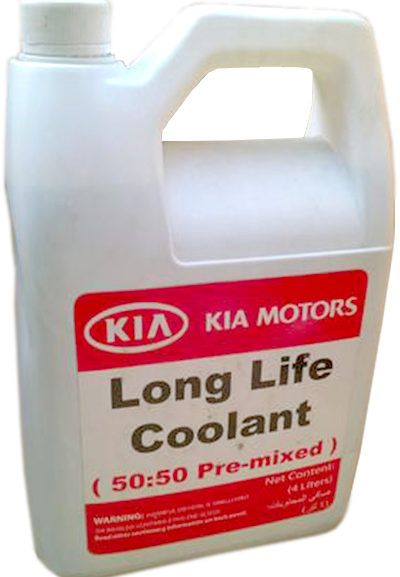Coolant For Car, Important component for new technology engine but how to use? and what is a coolant about how they do work? Antifreeze or coolant is a very important component of an engine’s cooling system. Without coolants, it would be quite difficult to prevent an engine from freezing or overheating. This automotive fluid is critical to the optimum operation of your car’s engine. Using the right type of coolant is, therefore, important. The problem now is which of the different colors of coolant you should use.
Any Difference at All
There is no difference in the purpose of either variant of engine coolant. Both serve to protect the engine from freezing overheating, depending on which part of the globe you live in. If you live in warm regions, then the coolant will help prevent engine overheating. Motorists who live in colder climates can rely on antifreeze to avoid freezing their engines. In addition to protecting the engine against extremes of temperatures, engine coolants also provide corrosion protection. The cooling system of the car is mostly composed of metal parts. These are subject to corrosion if one only uses water. Another issue that an engine coolant can help with is the formation of scales or deposits. These can lower the cooling efficiency of the system and lead to faster deterioration of the engine. Modern engine coolants also contain anti-foam additives. The prevention of foam formation within the cooling system can help enhance its efficiency. This translates to better engine performance and the prevention of unnecessary engine wear.
Technology
This is the major difference between a green coolant and an orange antifreeze. One utilizes Inorganic Additive Technology, while the other uses Organic Acid Technologies. The technologies alone will already provide you a clue as to the types of ingredients that your radiator fluid contains. A green coolant uses Inorganic Additive Technology. This technology is the older of the two. Coolant manufacturers produce this type of engine coolant for pre-2000 cars. Many of these cars have copper and steel components in their radiators. Inorganic substances are those that do not contain the carbon element in their chemical structure. This type of engine coolant features anti-corrosion additives. They have a lifespan of about two to three years. After this period, the coolant requires flushing and replacement. The orange coolant uses Organic Acid Technologies. As you may have guessed, this includes chemicals that contain carbon. This is a newer technology and as a response to the shift in the material composition of newer car engine cooling systems. Modern cars now use nylon and aluminum, instead of steel and copper in their cooling systems. The additives in an orange antifreeze prevent corrosion at the same time helping to cool the engine. There is another type of engine coolant that is an offshoot of the OAT. This is the Hybrid OAT. It combines the cooling efficiency of IAT and the corrosion resistance of OAT. This technology can have a radiator fluid color of yellow, pink, red, or blue. They can last anywhere between 4 and 5 years or up to 150,000 miles before requiring flushing and replacement.
Inorganic Additive Technology
This technology is used in the conventional green coolant. Silicates and phosphates added to a base of ethylene glycol protect the metals in the cooling systems from corrosion. This type of coolant is used primarily in cars built before 2000 with steel and copper components. Some IAT coolant formulations use propylene glycol in place of ethylene glycol because, although it is similar chemically, it is less toxic to humans, pets, and the environment. Every two to three years or 30,000 miles, the anti-corrosion additives in the green coolant are depleted and the coolant needs replacing.
Car Coolant Organic Acid Technologies
During the 1990s, cooling system components shifted to more aluminum and nylon, so coolant was reformulated to protect these new materials. This type of coolant uses organic acids to prevent corrosion and is usually orange in color. The third type of coolant utilizes Hybrid Organic Acid Technology that combines the benefits of IAT and OAT into one product. HOAT coolants are often yellow or orange but may also be blue, red, or pink. Both of these types are long-life coolants and may last up to five years or 150,000 miles before they need to be replaced.
Car Coolant vs. Water
While water can act as an effective all by itself, it has some limitations, including a freezing point of 32 degrees and a boiling point of 212. But coolants usually contain a mixture that is half water and half either ethylene glycol or propylene glycol, which extends the functional temperature range of the cooling system even further, from somewhere around minus 30 degrees to as high as 265.
Mixing Car Coolant
Mixing different types of coolants is not dangerous — causing explosions or other pyrotechnics — but a mixture may damage the cooling system’s components because OAT coolants are designed to protect different materials than IAT coolants. An additional consideration when using two coolant types is that the resulting mixture will last only as long as the coolant with the shortest lifespan. So a mixture of a long-life HOAT product with a conventional green coolant will still be depleted after three years or 30,000 miles.
Coolant For Car, Now we read about coolant technology and its work.














[…] pretty self-explanatory: to pump fuel from the gas tank to the engine. So it’s a no-brainer that malfunctioning is bad news. It’s important to familiarize yourself with […]
[…] are two fundamental types of synthetic oil currently available in the market. Choosing which between these two will be right for your vehicle depends on a variety of factors […]
[…] cost by much. The addition of synthetic oil enhances its viscosity and wear resistance at higher temperatures and stress. Synthetic-blend engine oils can also offer better performance at lower temperatures, […]
[…] is the main cause of high fuel consumption. Learn how to save fuel by driving behind a larger vehicle and using your vehicle’s inertia to move ahead without using fuel. There is one good way to […]
[…] Redefined Imagine a challenging terrain, bright daylight, and a yearning for adventure. In comes, Sportage, with its vibrant appeal, […]
[…] checks on top of what you get from an interim car service. These can include checking the coolant system, throttle operation, distributor cap condition, and mounts for the gearbox and the engine. It can […]
[…] pay attention to it at least once per ride. If you’re usually traveling the same routes, such as heading to and from work each day, you’ll get a firm understanding of what your MPG should be, both in […]
[…] priority. From a safety standpoint, they are more important than the engine. After all, a poorly maintained engine could result in engine failure. But if your poorly maintained brakes take longer to stop […]
[…] be able to turn at all. An initial indicator that there is a problem will be an unusual noise that sounds a bit like a chirping or rumbling sound. Some wheel-bearing assemblies are completely sealed and […]